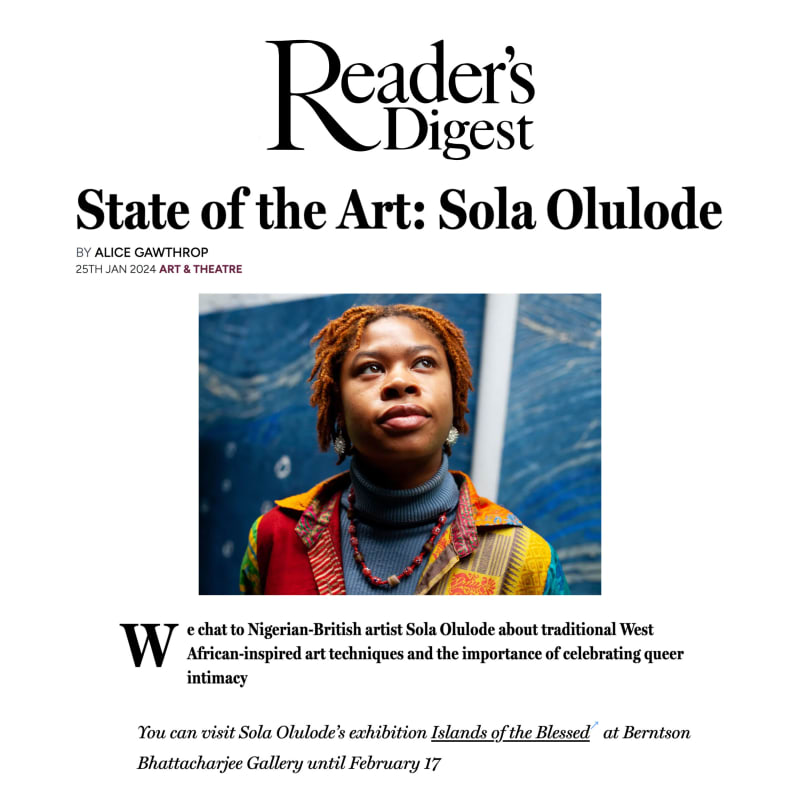We chat to Nigerian-British artist Sola Olulode about traditional West African-inspired art techniques and the importance of celebrating queer intimacy
Reader’s Digest: Can you tell us a bit about yourself and how you came to be an artist?
Sola Olulode: I was always drawn to drawing and painting as a very small child. I was able to explore it at school, and then went on to study at a university level. Quite soon after graduating I was able to partake in graduate shows and had graduate residencies, so I started practicing professionally quite quickly. I feel really privileged that I was able to study art at a higher education level. I think that opened a lot of doors for me.
RD: What are your artistic inspirations?
SO: I was really drawn to old master paintings when I was growing up. I was obsessed with Leonardo da Vinci, the pre-Raphaelites, things like that. These were the paintings that I would see in major galleries. But then learning about my own personal interests, I was looking at the black arts movement, Claudette Johnson, artists like that. I was always interested in the ways that artists paint the body and the scenes that they’re creating, but I wanted to explore less typical artists.
During university I was looking at a lot of Nigerian artists like Wole Lagunju and Nike Davies-Okundaye. My research was around how they were using traditional art practices. At school here we learn about the masters and all those traditional art movements, but I wanted to learn about what the other non-European art movements were and how they had developed in other countries.
I wanted to see how contemporary Nigerian artists were using some of those more traditional crafts and techniques. No one was really paying attention to West African artists. So I kind of developed my own technique by looking at textiles, the history of cloth making techniques, and applying that to the technique that I’ve learned through oil painting and European art.

